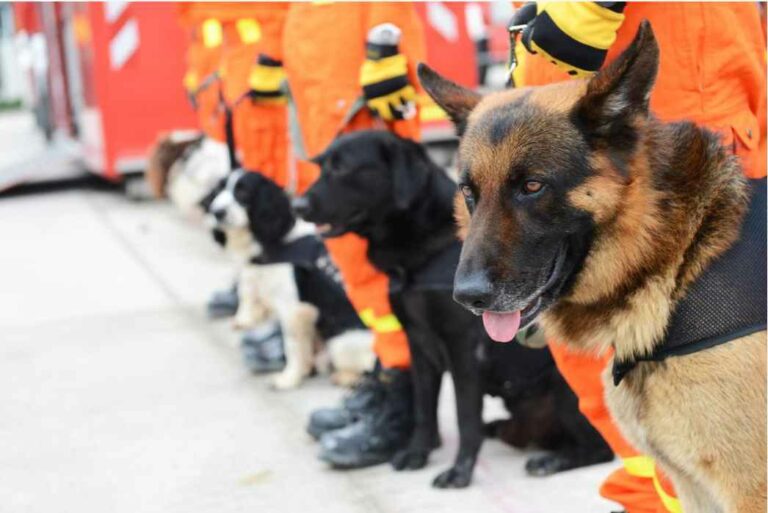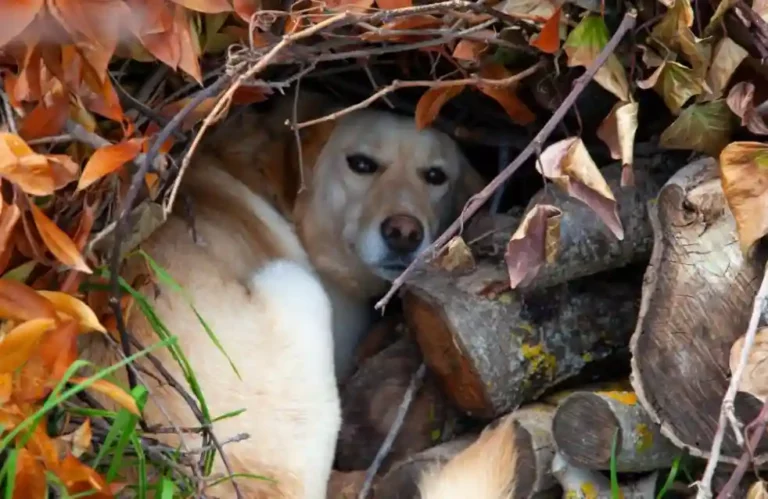Why Does My Dog Put His Paw on My Mouth? 3 Tips & Vet Advice
As a dog owner, you may have experienced your puppy putting his pawing at your mouth at one time or another. While this behavior may seem cute and endearing, it can also be a bit concerning and even annoying. As a dog breeder, I’m here to provide some insight into why your dog may be doing this and how to train them to stop.
Here is the quick answer,
Why Does My Dog Put His Paw on My Mouth? It is a way of showing their love to the owner, and they seek your special attention. Sometimes they do this when they demand food. They will do this often when they start to play and try to show dominance.
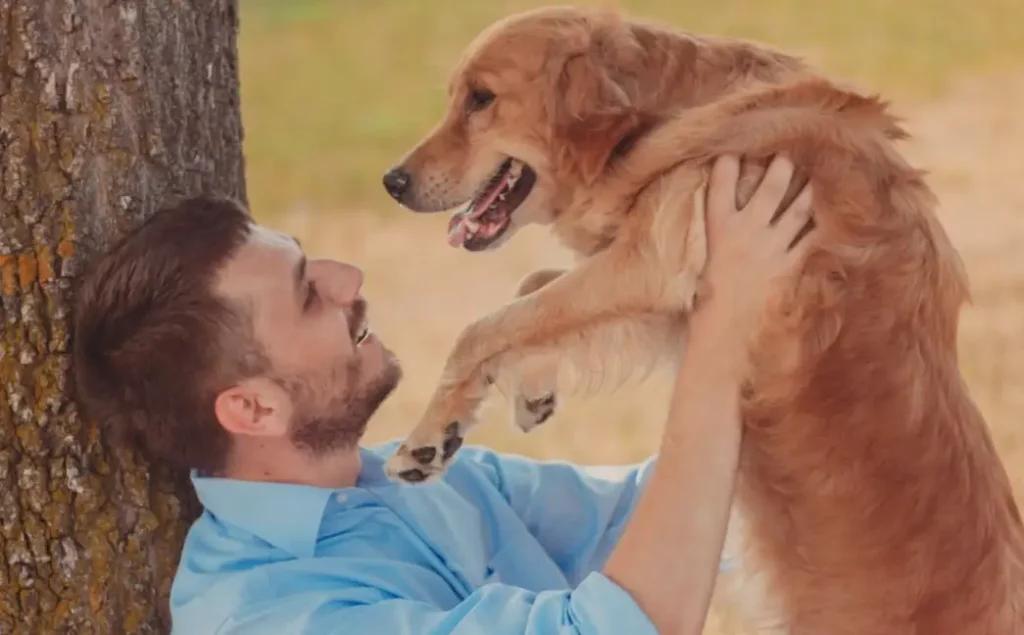
Table of Contents
- Understanding the pawing behavior in dogs
- Possible reasons why dogs put their paw on their owner’s mouth
- How to train your dog to stop pawing at your mouth
- Other ways to communicate with your dog
- The importance of positive reinforcement
- Common mistakes to avoid while training your dog
- When to seek VET help
- Conclusion: Loving your dog while setting boundaries
- FAQ
Understanding the pawing behavior in dogs
Dogs use their paws to communicate with their owners and other animals. They may paw at you to get your attention, ask for food or water, or to show affection. Sometimes, they may even be trying to comfort you if they sense you’re upset or anxious.
However, when your dog repeatedly puts their paw on your mouth, it’s essential to take notice. This behavior is unpleasant and can also be dangerous if your dog accidentally scratches you.
Possible reasons why dogs put their paw on their owner’s mouth
There are several reasons why your dog may be putting their paw in your mouth, including:
Attention seeking
Your dog may be pawing at your mouth simply to get your attention. They may want to play or go for a walk, or they may feel lonely and want affection.
Dominance
In some cases, your dog may be pawing at your mouth as a way of asserting their dominance over you. This can be a sign of a larger behavior issue that needs to be addressed.
Anxiety
Dogs may also paw at their owner’s mouth if they’re feeling anxious or stressed. This behavior can be a way for them to seek comfort and reassurance.
Playfulness
Your dog may also be pawing at your mouth to play with you. This behavior may be accompanied by barking, jumping, or other playful gestures.
How to train your dog to stop pawing at your mouth

If you’re tired of your dog pawing at your mouth, there are several steps you can take to train them to stop.
Here are some tips:
Set boundaries
It’s essential to set clear boundaries with your dog and let them know that pawing at your mouth is not acceptable behavior. You can do this by saying “no” firmly and removing their paw from your mouth.
Reward good behavior
When your dog stops pawing at your mouth, be sure to reward them with praise and treats. This will encourage them to continue this good behavior.
Provide an alternative
Give your dog an alternative behavior to engage in when they feel the urge to paw at your mouth. For example, you can give them a toy or treat to play with instead.
Be consistent
Consistency is key when it comes to training your dog. Be sure to enforce the rules consistently and reward good behavior every time.
Other ways to communicate with your dog
In addition to training your dog to stop pawing at your mouth, there are other ways to communicate with your furry friend.
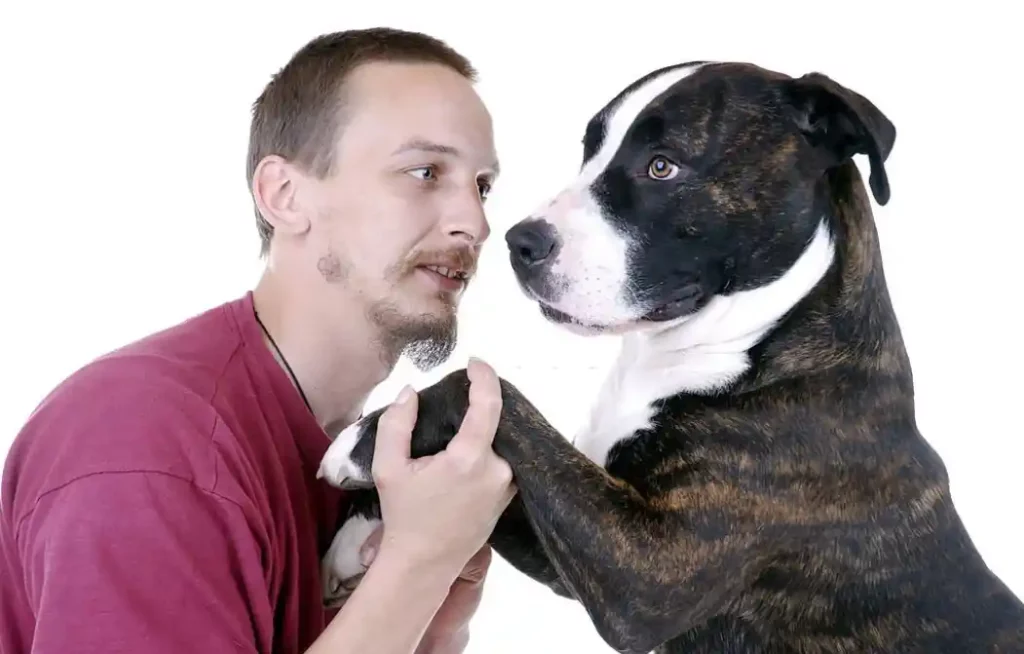
Here are some suggestions:
Verbal cues
Use verbal cues like “sit” or “stay” to communicate with your dog. This will help them understand what you want them to do.
Body language
Dogs are very attuned to body language, so use this to your advantage. For example, if you want your dog to stay, stand up straight and hold your hand out in a “stop” gesture.
Eye contact
Maintain eye contact with your dog when you’re communicating with them. This will help them focus on you and understand what you’re saying.
The importance of positive reinforcement
When training your dog, it’s essential to use positive reinforcement. This means rewarding good behavior with treats, praise, and affection. Positive reinforcement is a much more effective training method than punishment, which can be confusing and stressful for your dog.
Common mistakes to avoid while training your dog
There are some common mistakes that dog owners make when training their furry friends. Here are a few to avoid:
Punishing your dog
As mentioned earlier, punishment is not an effective training method. It can make your dog anxious and fearful and may even lead to more problematic behavior.
Inconsistency
Consistency is key when it comes to training your dog. Your dog may become confused and frustrated if you’re not consistent with your rules and rewards.
Not providing enough exercise or stimulation
Dogs need exercise and mental stimulation to stay healthy and happy. Make sure your dog is getting enough exercise and playtime to help prevent problematic behavior.
When to seek VET help
If your dog’s pawing behavior is persistent or problematic, it may be time to seek professional help. A dog trainer or behaviorist can work with you and your dog to identify the underlying cause of the behavior and develop a training plan to address it.
Conclusion: Loving your dog while setting boundaries
In conclusion, pawing at your mouth may be a cute behavior, but it can also be frustrating and even dangerous.
By understanding why your dog is doing this and implementing some training methods, you can teach your furry friend to stop this behavior and communicate with them in a more positive way.
Remember always to use positive reinforcement and set clear boundaries with your dog while showing them the love and affection they deserve.
Related Articles: –
Why does my dog only have four toes on all its feet?
How Can I Treat My Dog’s Dislocated Leg? [Best Vet Advice]
How Long Does It Take For A Dog’s Paw Pad To Heal?
FAQ
Is pawing at my mouth a sign of aggression in dogs?
Not necessarily. Pawing at your mouth can be a sign of several things, including attention seeking, playfulness, or anxiety. However, if your dog’s pawing behavior is accompanied by growling, snarling, or other aggressive behavior, it may be a sign of aggression.
Can I train my dog to stop pawing at my mouth?
Yes. You can train your dog to stop pawing at your mouth by setting clear boundaries, rewarding good behavior, and providing an alternative behavior to engage in.
When should I seek professional help for my dog’s pawing behavior?
If your dog’s pawing behavior is persistent or problematic, it may be time to seek professional help. A dog trainer or behaviorist can work with you and your dog to identify the underlying cause of the behavior and develop a training plan to address it.

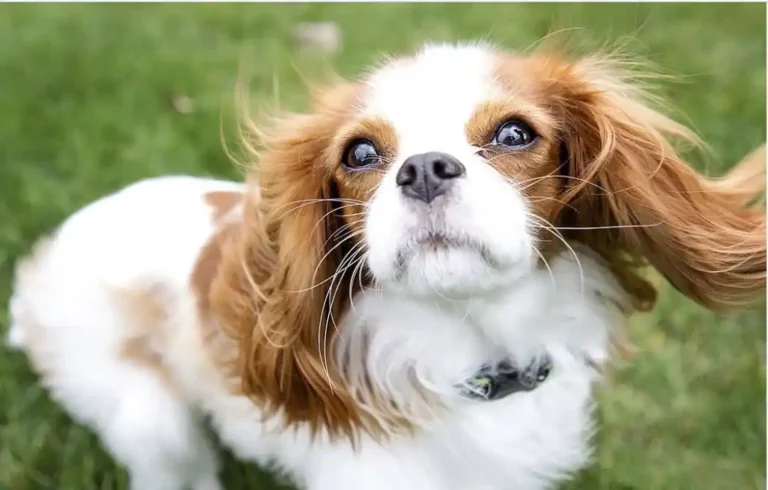
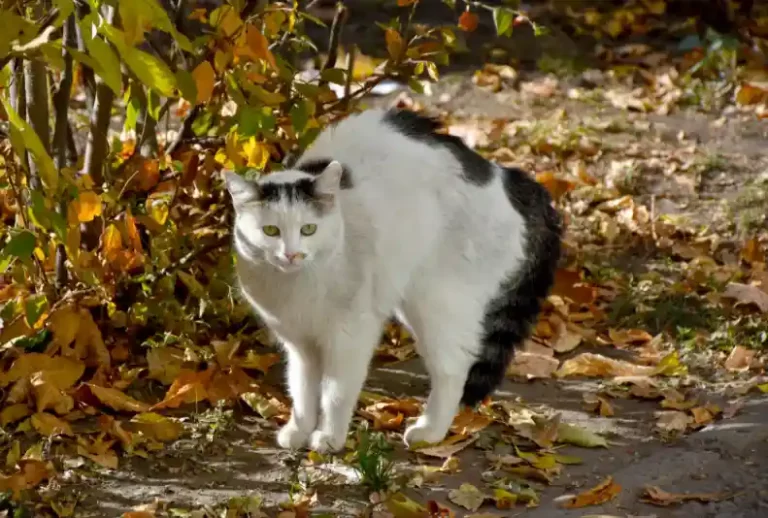
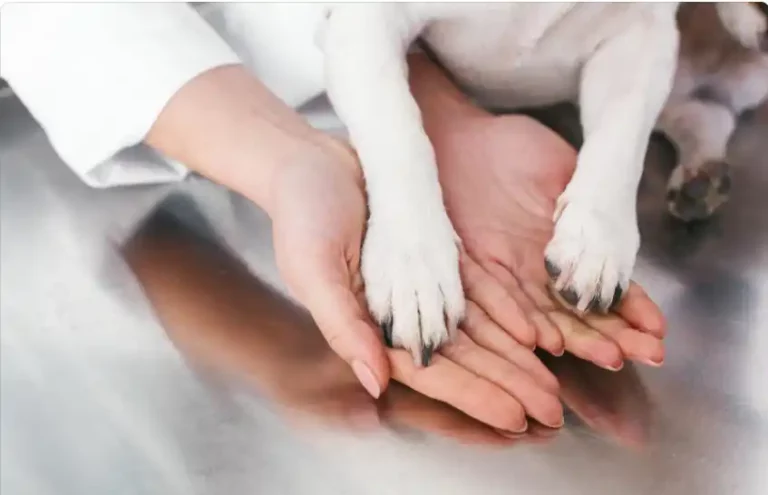
![Can You Wash Your Pet With Laundry Detergent [Read Vet advice] 7 Can You Wash Your Pet With Laundry Detergent [Read Vet advice]](https://www.puppiesdiary.com/wp-content/uploads/2023/01/Can-You-Wash-Your-Pet-With-Laundry-Detergent.webp)
